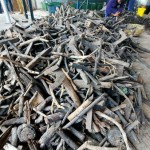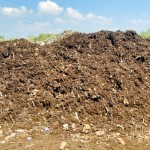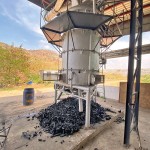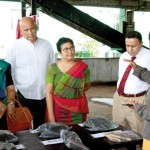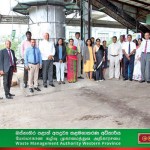A Breakthrough in Waste Management: The Autothermal Pyrolizer Plant
View(s):Addressing Sri Lanka’s Waste Challenges
Sri Lanka’s open economy and evolving consumption patterns have led to a rapid increase in urbanization and solid waste generation, resulting in numerous environmental problems. Sri Lanka faces a critical waste management crisis, with over 300 municipal solid waste dumpsites spread across the country. These dumpsites operate with little to no control over their environmental impacts, leading to severe issues:
The primary method for managing waste in Sri Lanka has been composting, given that 60-65% of the waste is biodegradable and perishable. However, composting has not been a complete solution. Approximately 50% of the composting feedstock, which includes long-term degradable materials such as coconut shells, husks, and wood, remains as residue. This residue is often discarded back into the dumpsites, perpetuating the pollution cycle and failing to address the underlying waste management problem effectively.
Air Pollution: Decomposing waste emits greenhouse gases (GHGs) and toxic gases, significantly contributing to air pollution and climate change.
Water Pollution: Leachate, a toxic liquid formed from decomposing waste, contaminates ground and surface water. This is particularly concerning as many dumpsites are situated near rivers, lakes, or streams, which serve as essential sources of drinking water and other uses for local populations.
Terrestrial Pollution: Leachate seeps into the soil, degrading land quality and posing risks to terrestrial ecosystems.
The Genesis of Innovation
In a significant milestone for waste management, Sri Lanka has unveiled the world’s first autothermal pyrolizer plant, marking a pioneering step in sustainable and environmental waste management. This innovative plant, collaboratively developed by the University of Sri Jayewardenepura, Open University of Sri Lanka, University of Moratuwa, the National Engineering Research and Development Center (NERDC), and the National Research Council, represents a collective effort of multidisciplinary expertise.
The project, initiated in late 2018, was financially supported by the Target Oriented Research grant from the National Research Council. The initial conceptual model was developed by Professor Meththika Vithanage, leveraging over twelve years of biochar research. The design of the pyroliser was then undertaken by Professor Mahinsasa Narayana and Mr. Chathuranga Wickramasinghe at the University of Moratuwa. This design was transformed into a functional pilot-scale pyrolizer by a dedicated team at NERDC, led by Engineer Nandana Edirisinghe and Mr. Sunil Welivita. Further advancements were made with the development of a leachate treatment system using biochar. This aspect of the project was spearheaded by a team of scientists including Professor Bandunee Athapattu from the Open University of Sri Lanka, Professor Ajith de Alwis from the University of Moratuwa, and Professor Meththika Vithanage from the University of Sri Jayewardenepura.
The autothermal pyrolizer plant was designed to convert compost residues into biochar, which can be used to mitigate pollution through a landfill leachate treatment system, reduce gaseous emissions by using biochar as a phytocapping material, and enhance soil quality. This innovative approach not only adds value to compost but also represents a sustainable solution to the waste management challenges faced by Sri Lanka. This is a solution to overcame numerous challenges in compost residue management to innovate a unit capable of carbonising two tons of compost residue at a time. The plant was successfully installed at the Karadiyana Mihisaru Resource Management Center in late 2023 under the diligent supervision of Nalin Manapperuma, Director of the Waste Management Authority of the Western Province. The unwavering support from the dedicated WMA team, including Mr. Kasun, Mr. Madura, and Ms. Priya, has been instrumental in ensuring the smooth operation and success of the project.
To ensure the autothermal pyrolizer plant operates optimally and produces high-quality biochar, continuous research and training initiatives have been implemented with support from the academic sector. Currently, two students from the Faculty of Technology at the University of Colombo are conducting internships focused on pyrolyzer optimization. Additionally, employees at the Western Provincial Waste Management Center have undergone specialized training to manage and maintain the plant, guaranteeing its efficient and effective operation while providing a valuable platform for skill development and hands-on experience.
The Role of Biochar in Environmental Sustainability
Biochar production through the carbonization of compost residues offers numerous environmental benefits that are crucial on both local and global scales.
Enhancing Soil Quality:
Biochar improves soil quality by increasing nutrient retention and enhancing microbial activity. In agricultural settings, biochar acts as a soil amendment that can boost crop yields, improve water retention, and reduce the need for chemical fertilizers. For example, in regions like Sub-Saharan Africa and Southeast Asia, biochar has been used to revitalize degraded soils, leading to better food security and sustainable farming practices. Now farmers in Sri Lanka are also tend to use locally produced biochar for their fields.
Pollution Mitigation:
Biochar helps prevent air and water pollution by trapping harmful substances and reducing leachate. Locally, this is particularly important for Sri Lanka, where over 300 municipal solid waste dumpsites pose significant environmental hazards. By incorporating biochar into waste management practices, toxic leachates containing heavy metals and organic pollutants can be significantly reduced, protecting groundwater and surface water bodies from contamination. Of course biochar is a possibility for drinking water treatment as well.
Climate Change Mitigation:
One of the most critical roles of biochar is its value as a carbon sequestrator. Biochar locks away carbon in a stable form for centuries, effectively removing CO2 from the atmosphere. This is a significant advantage over traditional waste disposal methods, which often lead to greenhouse gas emissions. In global contexts, countries like Australia and the United States are investing in biochar technology to meet their carbon reduction targets. For instance, the use of biochar in the Amazon Basin has been shown to enhance soil fertility while storing large amounts of carbon, mimicking ancient indigenous practices.
Green building material:
Biochar is emerging as a promising component in green construction materials due to its unique properties and environmental benefits. It enhances insulation and thermal properties in materials like insulation boards and lightweight concrete, thereby improving energy efficiency and indoor comfort. Additionally, biochar enhances structural strength and durability in concrete mixes, reducing cracking and improving water resistance. Its ability to sequester carbon dioxide contributes to mitigating greenhouse gas emissions associated with traditional building materials, aligning with global sustainability goals. Internationally, biochar is being explored in eco-friendly building applications such as biochar-enhanced plaster and lightweight concrete, highlighting its potential to foster sustainable building practices worldwide.
Global Examples of Biochar Use:
Internationally, biochar has gained recognition for its multifaceted environmental benefits. In Japan, biochar is used in urban areas to reduce air pollution and improve soil quality in parks and green spaces. In Europe, biochar is incorporated into large-scale agricultural practices to enhance soil health and reduce fertilizer dependency, thereby promoting more sustainable farming systems.
The integration of biochar production into waste management practices, as exemplified by the autothermal pyrolizer plant in Sri Lanka, demonstrates a forward-thinking approach to environmental sustainability. By leveraging biochar’s benefits—improving soil quality, mitigating pollution, and sequestering carbon—Sri Lanka can address its waste management challenges while contributing to global climate change mitigation efforts. This innovative solution not only transforms waste into a valuable resource but also sets a precedent for other countries grappling with similar environmental issues.
Why Build Our Own Pyrolizer?
While numerous pyrolyzers are in operation worldwide, Sri Lanka faces distinct waste management challenges that require a customized approach. Our indigenous autothermal pyrolyzer plant is tailored to handle local feedstock materials, such as abundant coconut shells and husks often disposed of in wet conditions due to mixed waste disposal practices. This unique capability ensures efficient processing and utilisation of these materials, which may differ significantly from imported feedstocks in size, type, and moisture content. By developing a homegrown solution, we not only meet the specific demands of Sri Lanka’s waste management system but also demonstrate our commitment to sustainable practices and environmental stewardship on a national scale.
Ceremony and Official Handover
The official handover ceremony of the autothermal pyrolizer plant to the Western Provincial Waste Management Center was held on June 26, 2024, at the Karadiyana Mihisaru Resource Management Center. This event marked a significant milestone in Sri Lankan scientists’ commitment to sustainability and was attended by numerous scholars and dignitaries. Mrs. SL Dhammika Wijesinghe, Chief Secretary of the Western Province, served as the chief guest. Other notable attendees included Professor Pathmalal Manage, Vice Chancellor of the University of Sri Jayewardenepura, the CEO and members of the board of governors of the National Research Council (NRC), Mr. Cyril Suduwella, founding chairman of the Waste Management Authority of the Western Province, and Engineer Mahesh Dissanayake representing the National Science Foundation. This ceremony underscored the collaborative effort and dedication involved in developing the world’s first autothermal pyrolizer plant, highlighting its importance as a pioneering step towards sustainable waste management in Sri Lanka.
This groundbreaking autothermal pyrolizer plant transforms Sri Lanka’s waste into a beacon of hope, illustrating that with unwavering research and united effort, we can turn our environmental challenges into sustainable triumphs.
Erandi
Faculty of Technology, University of Colombo
Prof. Meththika Vithanage
Ecosphere Resilience Research Center, University of Sri Jayewardenepura
HitAd.lk is the best and biggest mobile phone market in Sri Lanka, and we guarantee you will find what you need here from our extensive listing of mobile phones for sale in Sri Lanka. Whether it’s a budget-priced smartphone for communication, or higher end features with advanced connectivity, there are many different options from which to choose from on our site!



